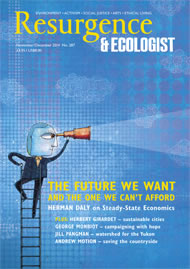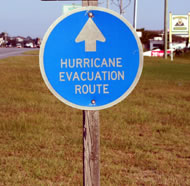It has now been 17 years since the Kyoto Protocol – the first international treaty designed to combat the build-up of greenhouse gases in the atmosphere – was agreed, and 5 years since the last attempt to write a more comprehensive treaty failed at the abortive United Nations gathering in Copenhagen in 2009. Since the Kyoto Protocol expired in 2012, greenhouse gases have continued to build up in the atmosphere, and we are already beginning to see signs of what the future may bring, with severe floods, prolonged heatwaves and more extreme weather events such as hurricanes, typhoons and tornadoes.
This year promises to break many more temperature records, and it is in the light of this that the UN Climate Change Conference rolls into Lima, Peru for the first part of December. Much has been made of the need to create a successor treaty to the Kyoto Protocol at next year’s COP 21 conference in Paris, but to consider the Lima meeting to be a mere formality is to accept that much of what has already been decided for the Paris agenda is a given and that there is no room for further discussion.
The most likely area for intense discussion in Lima will be the 2° Celsius figure, agreed in Cancún, Mexico in 2010, by which governments are effectively allowing temperatures to rise. Most climate scientists believe that a 2° C rise will bring about a 50–50 chance of a climate shift where extreme weather and high temperatures become the new normal. With a 2° C rise in global temperatures, the melting of glaciers and the polar ice caps will continue and possibly even accelerate.
Given this, the Alliance of Small Island States (AOSIS) are sticking to their demand that a 1.5° C rise be the official target of the new treaty – highly understandable, since further rising of sea levels threatens their very existence. This debate over a change in maximum acceptable temperature increase is very likely to take place in Lima. It could end up jeopardising the talks if the smaller states feel that the 2° C target has been set in stone by the big industrialised nations. A successful outcome relies on a number of other factors being dealt with properly.
One of these is a global cap on greenhouse-gas emissions, first by the developed nations, and then by the developing world. Estimates for when this first limit ought be vary between 2030 (as put forward by the EU and Japan) and 2050 (as put forward by the US, Canada and Australia). The period between the nations of the developed world capping their emissions, and those of the developing world capping theirs would be 20 years, as current policy suggests, or up to 30 years, as many developing countries would prefer.
At the Lima talks there are likely to be new discussions about what is defined as a developing country. Currently, countries are variously categorised as Annex 1 (developed), non-Annex 1 (semi-developed), and LDC (least-developed countries, who have preferential arrangements for their energy use). Many countries designated non-Annex 1 in 1992 (when the United Nations Framework Convention on Climate Change was founded after the Rio Earth Summit) have now developed to a point where they should be included as Annex 1. There will be a struggle to achieve this in Lima, but if it can be brought into the discussions it is more likely that it can be resolved in time for next year’s Paris conference.
The last few years have seen a mixed bag of good news and bad news concerning the global effort to address climate change. The United States is now taking the issue much more seriously, as evidenced by the executive actions taken by the Obama administration and many US state governments. The new Indian government is pushing forward plans to roll out solar power in its rural areas, with the aim of bringing renewable energy to 400 million people. China has included a shift to renewable power in its latest economic plan. The EU has managed to fend off attempts to water down its climate legislation and is sticking to its ambitious targets. Latin America, led by Mexico and Brazil, is becoming increasingly aware of the risks that climate change presents and the economic opportunities available in taking swift and early action. But there have also been reversals.
Canada and Australia have both pulled out of the Kyoto Protocol so that they can focus on maintaining their export-driven economies. (Canada’s is based on oil and gas, and Australia is a major exporter of coal and minerals.) The OPEC countries are still aiming to block an ambitious treaty, but a majority of countries will still be pushing for firm commitments and a strongly worded agreement to come out of the Lima talks. Many non-state actors have picked up the baton from hesitant politicians in order to focus on what is at stake if the talks are unable to produce a global agreement that is both comprehensive in dealing with the problem and ethical in the way it goes about it.
It is in this light that the talks in Lima can put a number of unresolved issues firmly on the agenda and that governments, NGOs, business groups, faith groups, cities, communities and people around the world can agree on what needs to be done to enjoy a future free from massive climate disruptions. There is a lot at stake, but by focusing on what is achievable, the talks – first in Lima, and then in Paris – can bring about the treaty that is so desperately needed.








